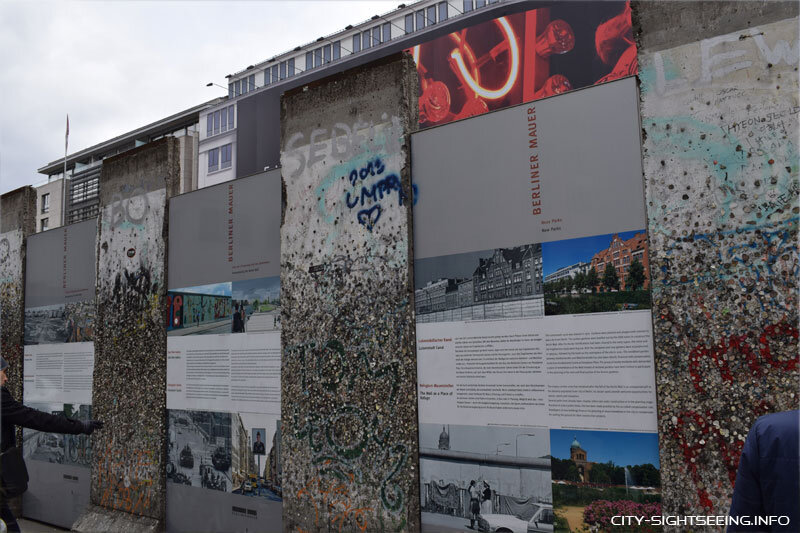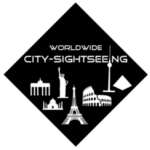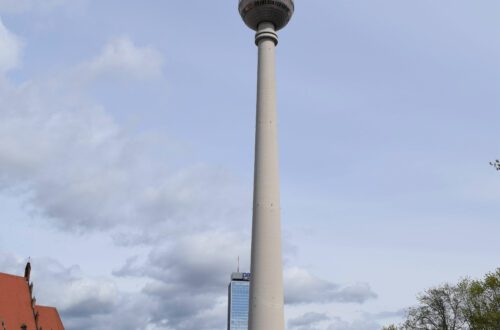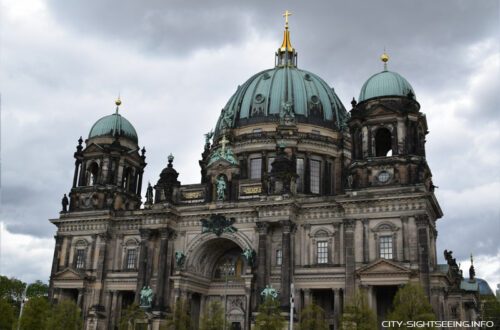Berlin Wall

The Berlin Wall, over 160 kilometers long, separated East and West Berlin for more than 28 years, disrupting connections within Greater Berlin between the East (capital of the GDR) and the western part of the city. Today, remnants of the Wall can be visited at various locations in Berlin, making it one of the most significant memorials and top attractions in Berlin. Here, you can find information, as well as tickets and tours related to the Berlin Wall.
Table of Contents
Berlin Wall: Symbol of Germany‘s Division and the Cold War
It is hard to imagine today, but Berlin was divided into East and West for a long time. Approximately 168 kilometers of border, ranging in height from 3.40 to 4.20 meters, separated Berlin. At some locations in Berlin, you can still see traces of the border.
In 1945, following the end of World War II, Berlin, like Germany, was divided into four sectors. From the summer of 1945, demarcation lines, known as “zone borders,” were drawn between the occupation zones. During the Cold War, due to the different social systems – capitalism in the West and communism in the East – there were constant tensions between the Western Allies and the Soviet Union. The primary reason for building the Wall, however, was to prevent the escape of educated young individuals from the Soviet occupation zone and later the GDR. Between 1945 and the Wall’s construction, approximately 3.5 million people fled.
Construction of the Berlin Wall
The Berlin Wall was built on and after August 13, 1961, as a border fortification system by the German Democratic Republic (GDR). The so-called “antifascist protective wall” was erected, according to SED leadership, to protect against the threat from the West. However, its primary purpose was to prevent escape from the GDR to the western part.
The decision to build the Wall was made in Moscow during a meeting between Khrushchev and Ulbricht on August 3, 1961. Implementation began on the night of August 12-13, 1961, with the GDR sealing off the roads and railroads to West Berlin using 5,000 forces from the police and the People’s Police units, along with 4,500 members of the industrial action groups.
Death Strip
Unfortunately, the Wall’s history also includes the Death Strip. Since 1960, there was a shoot-to-kill order in cases of “illegal border crossing.” Over a hundred people were killed attempting to overcome the border installations towards West Berlin. The exact number of casualties is unknown. However, even after the Wall’s construction, an estimated 100,000 citizens of the GDR managed to flee to the West.
Opening of the Berlin Wall
As part of the political changes, the Wall was opened on the evening of November 9, 1989. The fall of the Wall ultimately paved the way for the dissolution of the GDR and simultaneously led to the reunification of Germany.
Berlin Wall Today as a Landmark
Today, parts of the Wall can be visited in Berlin, including the “Berlin Wall” memorial, which is now a central remembrance site for German division.
Other landmarks reminding of the Wall include:
- Checkpoint Charlie
- East Side Gallery
Checkpoint Charlie
Checkpoint Charlie was one of the Berlin border crossings through the Wall from 1961 to 1990. It was the scene of spectacular escapes from East Berlin at that time.
East Side Gallery
The East Side Gallery monument is located in Berlin-Friedrichshain. This permanent open-air gallery on the longest remaining section of the Wall, between Ostbahnhof and Oberbaumbrücke along the Spree, has been painted by 118 artists since 1990.
Visiting the open-air area and the visitor center is free. However, taking a guided tour is recommended to learn more.
Annual Visitor Numbers
Approximately 1,219,000 people visited the Berlin Wall memorial in 2019.
Address
Berlin Wall Memorial: Bernauer Str. 111, 13355 Berlin
East Side Gallery: Mühlenstraße 3-100, 10243 Berlin
Checkpoint Charlie: Friedrichstraße 43-45, 10117 Berlin
Opening Hours
Berlin Wall Memorial:
Visitor Center: Tuesday – Sunday: 10:00 am – 6:00 pm
Viewing Platform: Monday: 10:00 am – 4:00 pm
Tuesday – Sunday: 10:00 am – 6:00 pm
Exhibition on Memorial Grounds: Monday – Sunday: 8:00 am – 10:00 pm
East Side Gallery: accessible at all times
Ticket Prices
No admission fee.
Tickets
Weiteres / More:





